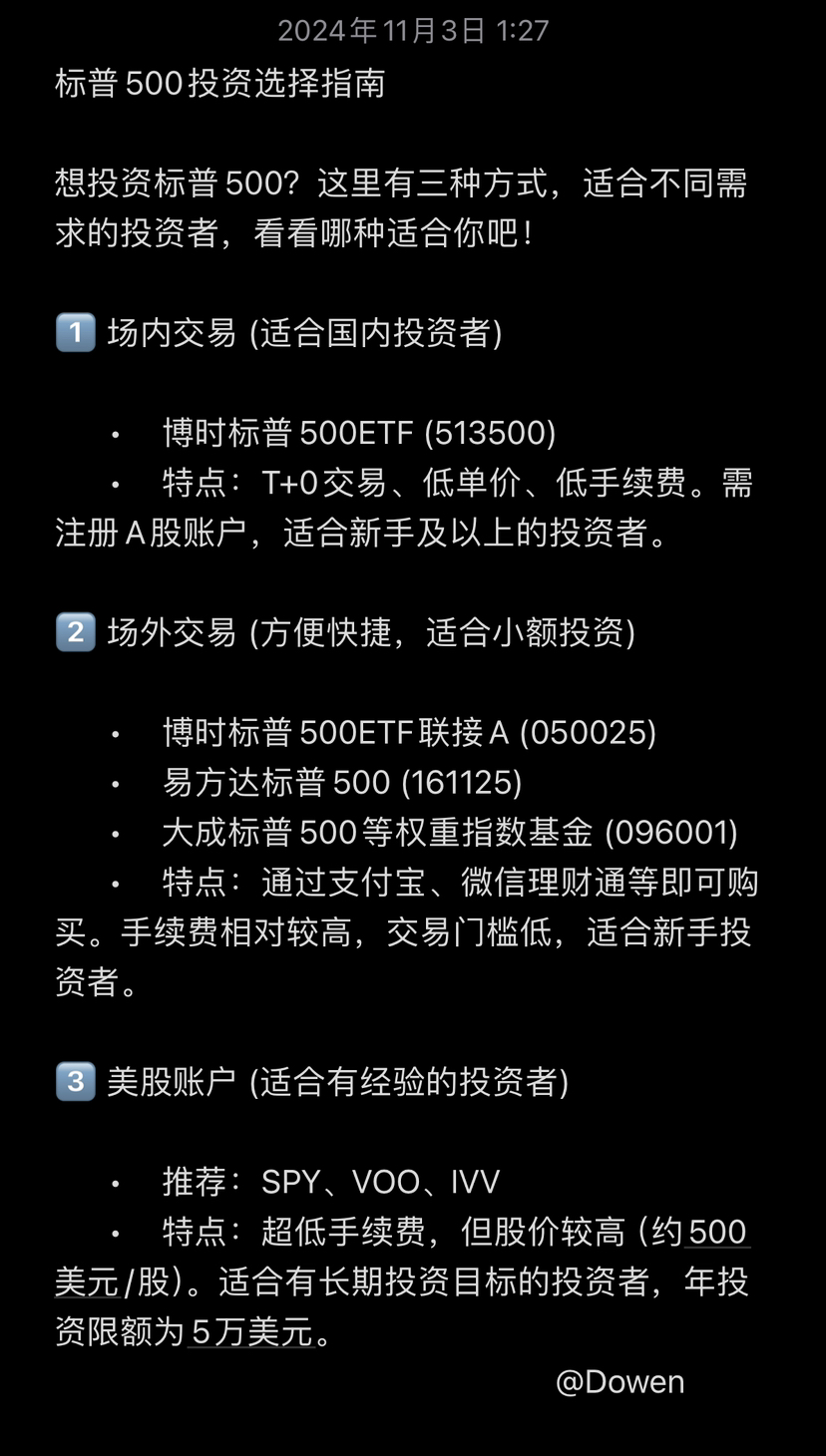The S&P 500 index represents the performance of 500 large publicly listed companies in the United States, making it one of the most sought-after investment targets for global investors. With the development of different investment channels, both domestic and overseas investors can invest in the S&P 500 index through various means. Here are several main investment options and their characteristics to help you choose the most suitable method.
1. On-market trading: Suitable for domestic investors
• Representative product: Bosera S&P 500 ETF (Code: 513500)
• Features: The advantage of on-market trading is T+0 trading, allowing for flexible operations and lower single prices, making it suitable for investors who wish to trade frequently. Furthermore, trading fees are low, but registration for an A-share account is required for purchase. Therefore, this method is more suitable for investors with a certain level of investment experience.
• Suitable audience: Investors with a certain understanding of investments, who enjoy flexible trading, and already have A-share accounts.
2. Off-market trading: Suitable for beginners with small investments
• Representative products: Bosera S&P 500 ETF Connect A (050025), E Fund S&P 500 (161125), Da Cheng S&P 500 Equal Weight Index Fund (096001)
• Features: The advantage of off-market trading is convenience; users can purchase through platforms like Alipay, WeChat Wealth Management, etc., making it suitable for novice investors without stock accounts. The threshold is low, suitable for small investments, and operations are simple, but the fees are relatively high.
• Suitable audience: Beginners with limited funds who are just starting to invest, or users without stock accounts who are accustomed to investing through wealth management platforms.
3. US stock accounts: Suitable for overseas investors and long-term investors
• Representative products: SPY, VOO, IVV and other ETFs
• Features: US stock accounts provide a direct way to invest in the S&P 500. Although these ETFs have a high stock price (around $500/share), US stock trading fees are low, making them suitable for long-term holding. Additionally, the US government has a limit of $50,000/year for overseas investors. Therefore, this method is more suitable for investors who are confident in long-term growth and have a higher investment amount.
• Suitable audience: Overseas investors with US stock accounts, who can bear higher single stock prices and prefer long-term investments.
4. Cross-border Wealth Management: A new choice for investors in two regions
• Features: Cross-border wealth management is a new policy launched in the Greater Bay Area, allowing investors in the region to conveniently invest in financial products from Hong Kong and mainland China. Through this channel, investors can directly purchase S&P 500 index-related products in the Hong Kong market, such as the Hang Seng S&P 500 ETF. Fees are lower, and there are more investment options.
• Suitable audience: Investors residing in the Greater Bay Area who wish to participate in cross-border wealth management.
Summary
There are many ways to invest in the S&P 500, each with its advantages and suitable investor demographics. On-market trading is suitable for domestic investors with certain experience, off-market trading is appropriate for small beginners, US stock accounts are more suitable for long-term overseas investors, while cross-border wealth management provides new options for investors in the Greater Bay Area.
Before making a choice, it is recommended that investors find the investment method that best suits them based on their financial situation, trading needs, and long-term plans.
Regardless of the method chosen, the S&P 500, as a classic long-term investment target, can provide potential returns to investors due to its stability and growth. I hope the information above helps you in your investment decisions!






